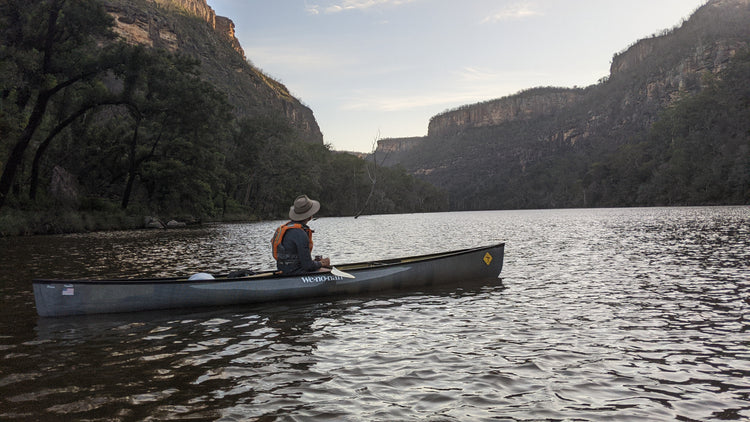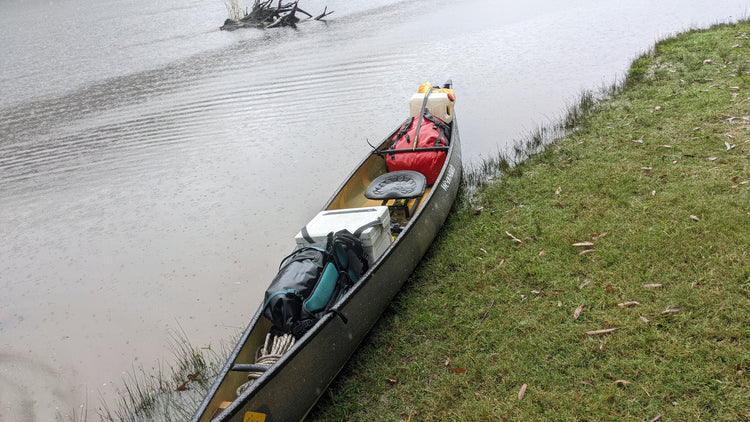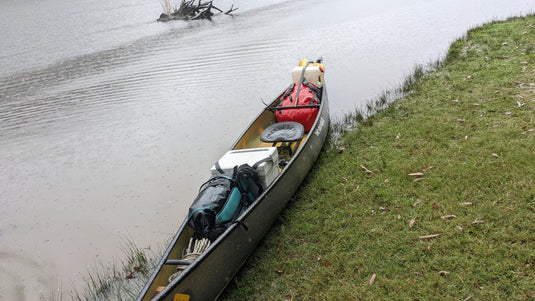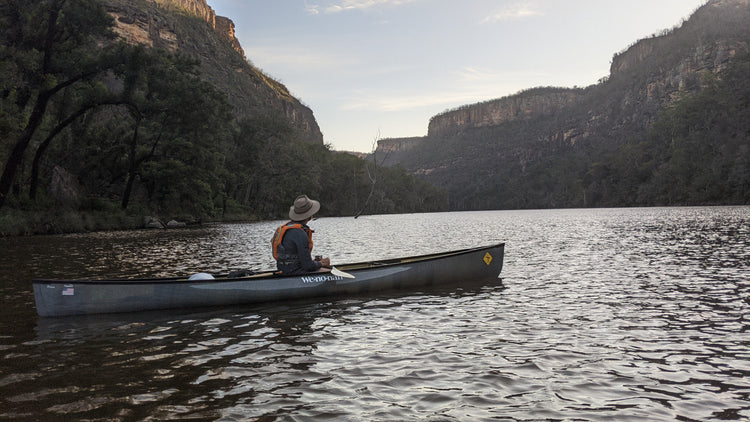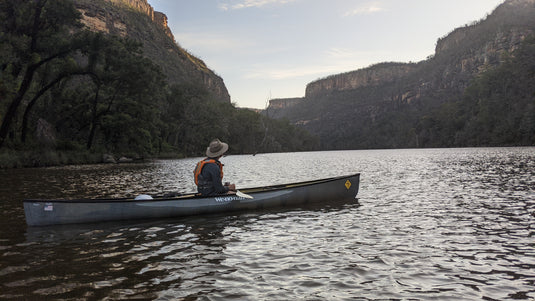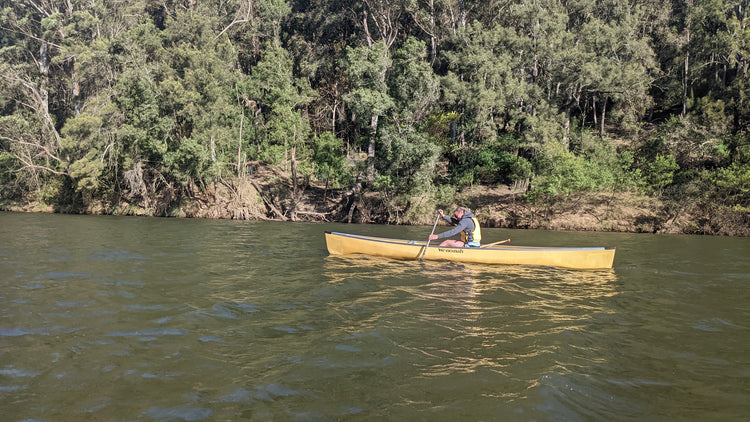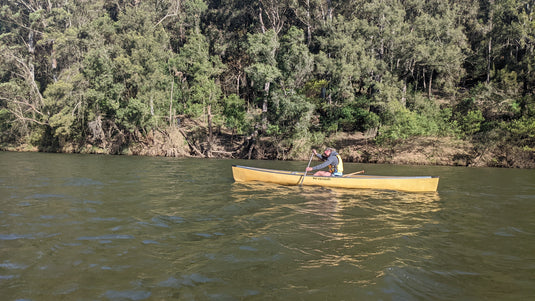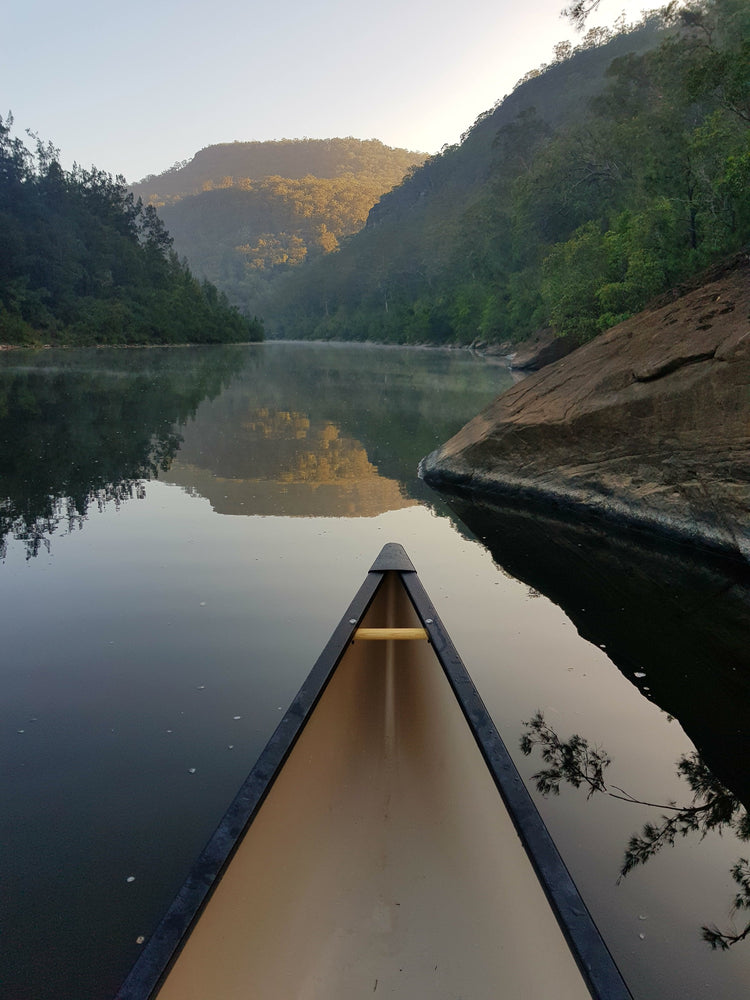If you think that kayaks are faster than canoes then you’re definitely not alone. However, you might be surprised to find out that this isn’t always the case.
The team here at Paddle and Portage Canoes get to spend a lot of time talking to people about canoes versus kayaks, and one of the most common things we hear is "Kayaks are just faster than canoes.” Today, we’re going to clear the air on this topic. If you want to know why we’re a fan of speedy canoes then read on!
On the surface when looking at traditional canoes next to performance touring sea kayaks, the statement that “Kayaks are faster than canoes” would appear to be true. However, this mindset comes from the assumption that all kayaks are the same, that all canoes are the same, and that being slow is inherently just a downside of all canoe designs. There is also an assumption that paddling with a single blade is one of the main causes for this lack of speed.
In order to bust this case open properly, we need to know a few things about what makes a paddle craft fast and what it is that slows them down. The two key considerations here are hull design and paddle technique.
Hull Design:
- Length - Waterline length = glide and contributes to speed. The longer a boat is, the harder it is to turn, but travels faster and more efficiently in a straight line.
- Width - Also known as “beam; The wider a boat’s hull, the more stable it becomes. However, this increases the surface area and increases drag. Thinner hulls are often quite unstable, but fast, and wider boats are ofter very stable, but slower.
- Rocker - Rocker is found along the bottom contour of the hull, end-to-end, where the ends of the craft (either bow, stern, or both) are curved up to shorten its waterline length. This increases the boat’s manoeuvrability but also causes it to be less efficient in a straight line, requiring more correctional strokes to stay on course.
Paddle Technique:
- Cadence - How many strokes per minute you are able to achieve. Often a “Hit and Switch” style of paddling is employed which calls for swapping sides to maintain direction rather than using corrective strokes (such as the “J-stroke”).
- Power - Finding the right balance of effort with each stroke.
The Reality
When people in Australia think of a canoe, they often think of two things:
- The heavy, cheap, plastic canoes they may have used on their school camp
- The traditional canoes whose shape originated from North America and Canada that Australians often refer to as a "Canadian canoe". These are often a prospector-style shape with a lot of rocker and a wide profile, designed to be nimble and stable whilst transporting goods up and down flowing rivers.
When Australians think of kayaks, they are often referring to:
- Long performance touring sea kayaks with a long thinner hull and minimal rocker.
- Ultralight Kevlar or carbon sports/fitness kayaks or surf skis which, again, are long, thin and have minimal rocker.
The reality is that there are so many different designs and variations of both hull shape and construction materials in both categories.
There is also the assumption that you’re required to use a double bladed paddle in a kayak and single bladed paddle in a canoe. This is far from the truth.
Introducing... Performance Touring Canoes!
Far from the Australian traditional idea of a “Canadian” canoe is the performance canoe. Available in a variety of seating configurations, the performance canoe often comes with a myriad of features designed to give you more speed. Some of these include:
- A foot brace to incorporate leg drive in your stroke and spread the effort over your whole body and reduce arm and shoulder fatigue.
- A narrower hull
- Pronounced tumblehome, which minimises gunwale width so that you can have easy access to the water
- Reduced rocker
- Longer hull
- A plumb bow profile
- Sliding contoured seat to help perfect your weight distribution or "trim" for maximum efficiency.
These canoes are often paddled with a short bent shaft paddle which allows for fast, short, and sharp paddle strokes. This allows the paddler to have a high cadence without putting in a large amount of power, and to be able to do a higher number of strokes per side before switching. The end result is a fast and efficient boat that, in many situations, can outrun kayaks of the same length!
“But how?”, you may ask. Surely, having double-bladed paddles would mean a kayak paddle would give you a higher cadence? The answer to this is technique. Using a kayak paddle requires a full rotation of the body every stroke as well as moving a much longer paddle. The short and lightweight nature of a canoe paddle, with some carbon canoe paddles weighing as little as 270g means that:
- The paddler has less fatigue over the course of the day, lifting less cumulative weight as they paddle.
- The shorter paddle can be reset more quickly with less body rotation and doesn't need to be lifted nearly as high out of the water.
Using the combination of hull design, paddle style, and paddling technique, performance touring canoes can reach cruising speeds well over 7km with good technique and sprint speeds of over 12km/h. Race/fitness canoes, which have less of a need to be stable than touring boats, can go even faster with cruising speeds of 10km/h and sprint speeds of over 13km/h!
Why Pick One Over the Other?
With all this information you may ask why you would pick one boat over the other. Since we’re talking about expedition paddling we’ll compare sea kayaks, since they can carry equipment, and performance canoes. Here are our pros and cons:
Performance/Sea Touring Kayak:
Pros:
- Enclosed craft (works well for ocean paddling when wearing a spray skirt)
- Less freeboard, meaning the boat is lower to the water in windy conditions
- Often come with a rudder to assist in steering
- Able to be rolled if capsized without leaving the boat (if you have your skirt on)
Cons:
- A lot of parts that will require maintenance or replacing over its lifespan
- Small gear capacity (limited to the space provided in the storage hatches)
- Floor mounted seat means that you are stuck in the same position paddling for as long as you are on the water
- More accessories to purchase to get the full use out of your kayak
- Fixed seats - need to carefully consider where you put weight in the boat in order to manage trim.
- Very difficult to use single blade paddle
Performance Touring Canoe:
Pros:
- Open boat - can store a huge amount of gear, even in skinnier boats (if you can see the floor, you can put gear there)
- Can use either a double bladed or single bladed paddle
- Can move your legs and change position as you paddle to reduce discomfort
- Can move the seat forward or back to adjust the trim and counteract weight differences in the boat
- Seats are raised, meaning your feet are below your hips which makes your feet less likely to lose circulation.
- Lighter weight than kayaks for their length and size due to less parts and material required.
Cons:
- Open boat - water is able to get in easier when paddling; in rough water conditions or in rain
- Not well-suited to paddling on the ocean
- Can be slightly more affected by wind due to having more freeboard than kayaks
- Does not come with rudder so requires a range of paddle strokes and edge control in order to maintain direction.
A performance touring canoe may not be the perfect option for everyone but it is worth knowing what they are, and that they exist! Models we carry and promote are the Cruiser 14.8, 15.8, and 16.8 models from Swift and the Minnesota II, Escape, Advantage, and Prism from Wenonah Canoe (with the Prism being the most popular composite solo canoe in N. America). We’re not claiming that a race canoe is quicker than a race kayak but we are asserting that a loaded performance touring canoe can absolutely keep up with a loaded sea kayak and may even be slightly quicker. If you’ve got big plans and you’d like to travel efficiently, in comfort, then maybe a performance touring canoe is the perfect fit for you.

